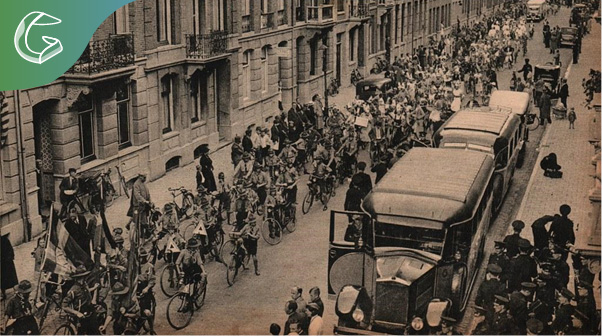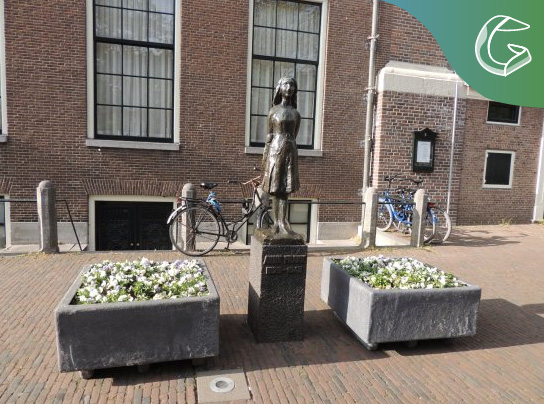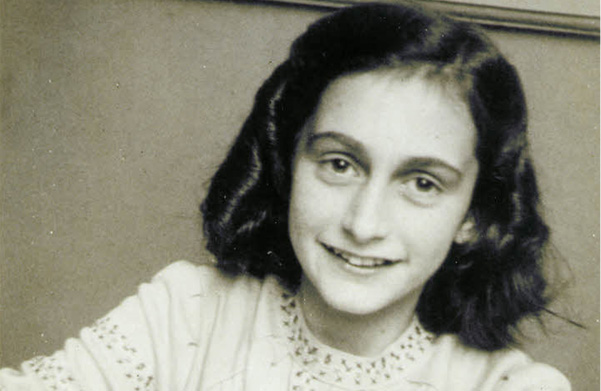On June 12th, 1929, Annelies Marie Frank, better known as Anne Frank, was born in Frankfurt, Germany, in a Jewish family whose father had been a lieutenant in the German Army during the First World War. Victim of the Holocaust, the young woman would manage to write an extensive diary before being captured, in which she reflected the difficult living conditions that her family suffered due to the Nazi persecution, and, especially, her concealment for two years until she was discovered and deported to a concentration camp. Published posthumously in 1947, her diary, translated into more than 70 languages, is one of the most forceful documents on the horrors of World War II and the cruelty of the Nazi regime. Here below, we will mention a little more about the diary and the biography of its author.
A tragic life
Anne Frank was born into a family of Jewish origin, in a Germany in which there was widespread poverty and political instability. Her family was completed by her father Otto, her mother Edith and her older sister Margot. In the mid-1930s, with Adolf Hitler’s rise to power and the persecution of the Jewish community beginning, the family decided to settle in Amsterdam.

There, Anne lived relatively well: she made new friends, learnt the language, and enjoyed relative freedom, while her father started a small business. However, things changed when, in 1940, Nazi Germany successfully invaded the Netherlands, imposing a new regime that began to persecute the Jewish population. From there, Anne was forced to go to a segregated school, she was forbidden to go to parks, cinemas and shops, and her father was forced to move with his company. The family began to see more and more restrictions when, in 1942, they faced a call to return to The Nazi Germany, so she decided to hide at the back of what had been her offices, along with four other people.

It was then that Anne began to write her diary, in which she combines stories from adolescence together with a testimony of the harsh living conditions to which she was forced to live. In August 1944, the Gestapo (Nazi Police Force) broke into the hideout and deported the eight refugees to various concentration camps, where they died as a result of inhumane travel, accommodation and work conditions. Anne and her sister died between February and March 1945 in the Bergen-Belsen concentration camp, as a result of an outbreak of typhus. Only her father Otto would survive the war, being the main driving force behind the publication of her daughter’s diary.
The Diary
In 1942, shortly before hiding, Anne received a notebook as a gift for her thirteenth birthday that she had seen shortly before in a shop window. In it she poured fragments of her adolescent life, as if she were addressing a friend. A few months later, the family was forced to hide in a small attic with four other people. At that moment, Anne began to retell the difficult experiences that this forced coexistence entailed, as well as her feelings for another adolescent refugee.

Encouraged by the Dutch minister of education in exile, who summoned to write to leave testimonies that could be published after the war, Anne adopted a literary style, rewriting several fragments of her work. It also reflects her dreams of becoming a professional writer, and her hopes for when the war ended.
The last entry in the diary was on August 1st, 1944, three days before she was arrested and deported. The notebook was concealed from Nazi searches, and was returned to her father Otto in 1945, when she was able to return to Amsterdam. A first article on the diary was published in 1946, and finally in 1947 it was published as a book, with brief corrections, with the title «The house behind» («Het Achterhuis» in its original Dutch). From then on, translations would begin in 70 languages, films, plays and documentaries would be made, and the tragic and brave life of Anne Frank would remain as a testimony to the horror of the war.
The testimony of Humanity
The Anne Frank diary is a testimony of Humanity, which portrays the difficult life of a family persecuted by an intolerant and authoritarian regime. Originally published in Dutch in 1947, it began to be translated into other languages beginning in 1950. Thus, it was translated into German and French in 1950; to English in 1952, and to Spanish in 1955. Its translation into more than 70 languages allows us to bring a good part of the world closer to the memory of a young woman who left a valuable and heartbreaking testimony of one of the most tragic moments in history. For this reason, the knowledge of languages allows not only to approach one of the most important works of the 20th century, but also to reduce ignorance and misunderstanding towards other societies, contributing to living in a climate of peace and acceptance where young people, far from hide, you can live your dreams in freedom.
Conocé más sobre nosotros en nuestra Página Web, Instagram, Facebook, LinkedIn, Blog, TikTok, Lasso, y aprendé inglés online. – Si querés leer esta nota en inglés, hacelo en nuestro LinkedIn.
Sumate a nuestro newsletter para recibir novedades sobre nuestros cursos.
